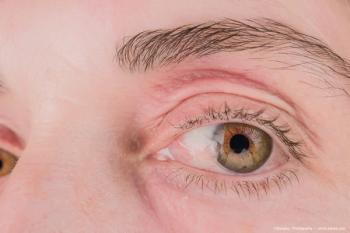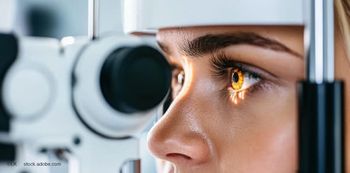
Study supports laser use for epithelial removal when performing CXL
Studies evaluating treatment of progressive keratoconus with corneal crosslinking (CXL) show greater benefit using an epithelium-off versus epithelium-on technique. However, epithelial removal by laser-assisted phototherapeutic keratectomy (PTK) may give better results than manual debridement, according to a study presented by Ronald N. Gaster, MD.
Beverly Hills, CA-Studies evaluating treatment of progressive keratoconus with corneal crosslinking (CXL) show greater benefit using an epithelium-off versus epithelium-on technique. However, epithelial removal by laser-assisted phototherapeutic keratectomy (PTK) may give better results than manual debridement, according to a study presented by Ronald N. Gaster, MD.
“We feel if we want to try to avoid penetrating keratoplasty in patients with progressive keratoconus, that CXL is safe, stops disease progression, improves visual acuity, and should be done sooner rather than later,” said Dr. Gaster, private practice, Beverly Hills, CA. “We are also encouraged by our experience with PTK epithelial removal, and believe that with more data from a larger number of patients and longer follow-up, it may become the procedure of choice for performing CXL.”
Dr. Gaster said that he and his colleagues at the Cornea Eye Institute, Beverly Hills, began to use PTK for removing the epithelium more than 1 year ago. He presented results from follow-up to 3, 6, and 12 months in cohorts of eyes that underwent CXL with either PTK or mechanical epithelial removal.
The PTK removal was done using an excimer laser (VISX S4 ,Abbott Medical Optics) set at a 50-µm depth and a 6.5-mm optical zone. The epithelium was then debrided out to 9 mm, and CXL was performed with the typical Dresden protocol for riboflavin administration and UVA irradiation.
The data supported the safety of the PTK technique and showed its use was associated with greater flattening of the corneal apex and a possible benefit of better visual acuity.
By 3 months, there was a mean flattening of central keratometry (K) by 0.28 D in the mechanical debridement group (71 eyes), compared with almost 2 D in the PTK group (46 eyes), although the difference between groups was not statistically significant. At 6 months-when there were 63 mechanical debridement eyes and 31 PTK eyes available for follow-up-the data were similar, but showed a trend to statistical significance (p = 0.07). Mean central K decrease from baseline to 12 months was 0.48 D for the mechanical debridement group (46 eyes) and 1.31 D for the PTK group (11 eyes) (p = 0.05).
At all visits, the improvement in uncorrected visual acuity was greater in the PTK group compared with the mechanical debridement group, although the difference never achieved statistical significance.
“We feel the lack of statistical significance is because we did not have enough patients and enough follow-up time,” Dr. Gaster said.
The only complications encountered were haze (1-2+) in one eye and white elevated epithelial dots in one eye that improved after 10 days of topical corticosteroid treatment.
For more articles in this issue of Ophthalmology Times eReport, click here.
To receive weekly clinical news and updates in ophthalmology,
Newsletter
Don’t miss out—get Ophthalmology Times updates on the latest clinical advancements and expert interviews, straight to your inbox.













































.png)


